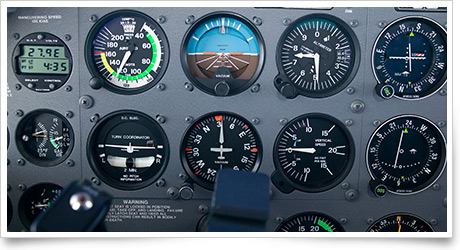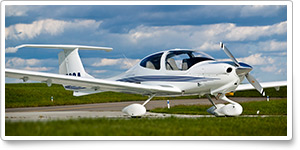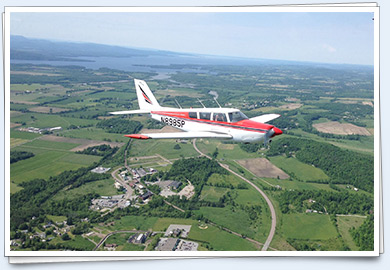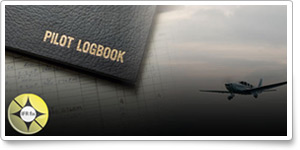| |||||
Training TipsSources and methods You're doing fine—so why does the CFI still look displeased?
"Your altitude is a hundred feet off!" he growls.
No it's not—it's right on the money, you think to yourself after a reassuring glance at the altimeter. Can't the CFI read the instrument from way over there in the right seat?
That's when the light goes on in your head: Your pitot-static instruments are using the alternate static source in this simulated system-failure drill. The CFI is reminding you that you must consult your pilot's operating handbook for inaccurate or erroneous instrument indications under various in-flight circumstances. You are already coping with one such predicament on this flight by making each course change using only the swinging, dipping magnetic compass for guidance. The alternate static source—usually positioned just below the throttle on Cessna 172s, and an option on Piper Warrior IIs—comes with its own set of operational considerations. It supplies static pressure from inside the cabin instead of at an external static port. That means that such things as open heaters, vents, and windows can affect instrument readings.
How much? That depends on the aircraft. A performance chart for a Cessna 182S Skylane operating with the alternate static source in use indicates that the altimeter may be off by 100 feet or more at some airspeeds. And, speaking of open windows, one of the first things you will probably do after landing and taxiing clear on this sultry day is open them and enjoy a bit of fresh air as you taxi in. Your instructor, now playing the role of a future passenger, wants to know if they can be opened right now, in flight.
What's the answer for your aircraft? The Cessna 182S pilot's operating handbook says windows may be opened at any speed up to 175 knots indicated airspeed.
Flight Training NewsSupport VFR flights on driver’s license medicalDay-VFR flights without a third class medical? It could be possible. Support the AOPA/EAA medical exemption to fly certain aircraft in these conditions using medical self-assessment and a driver’s license. But hurry—the deadline to comment is July 2. Read more >> Pan Am taps Carnegie Speech for language trainingPan Am International Flight Academy, Miami, has chosen Carnegie Speech to provide English language training for international pilots. Carnegie Speech’s language learning technology will be used at training centers in the United States and overseas to increase English proficiency. The company said Carnegie Melon University developed a technology that assesses a student’s speech, diagnoses his or her individual condition, and prescribes a specific tutoring plan to address the diagnosis, yielding a 100 percent improvement in spoken-English skills after 10 hours of use. New private, commercial pilot airplane practical test standardsStudent pilots, flight instructors, and designated pilot examiners: New practical test standards for the private and commercial pilot airplane practical tests went into effect June 1. Download the latest versions from the FAA website. AOPA opens applications for three flight training scholarshipsAOPA is now accepting applications for three $5,000 flight training scholarships to be awarded at the AOPA Aviation Summit in Palm Springs, Calif., Oct. 11 through 13. Student pilots working toward an initial sport, recreational, or private pilot certificate may apply online for the ASA Flight Training Scholarship, Jeppesen Flight Training Scholarship, and the Richard J. Santori Memorial Scholarship. Read more >> VFR, IFR, or TFR: FSS is there for youIt's a beautiful day. The airplane practically begs for a quick hamburger hop. Not so fast! Have you contacted flight service (FSS) for a briefing—the one where you ask for temporary flight restrictions (TFRs)? Especially in this presidential election year, expect TFRs to pop up at any time. Let the Air Safety Institute's A Pilot's Guide to Flight Service online course remind you of how FSS can help before takeoff and in the air. Take the minicourse now >> Training ResourcesA runway incursion doesn't have to end with injuries and bent metal to leave a mark in the statistics column. It may be as simple as not having the tail of your aircraft completely across the hold short line after landing when another airplane touches down. Or it could be the result of getting confused while taxiing at an unfamiliar airport. Take the Air Safety Institute's safety quiz on airport signs and markings, underwritten by the AOPA Insurance Agency, and help do your part to minimize the number of runway incursions attributed to general aviation.
Did you know that student pilots who join AOPA are three times more likely to complete their flight training? Membership includes unlimited access to aviation information by phone (800/USA-AOPA, weekdays from 8:30 a.m. to 6 p.m. Eastern time) or from Flight Training Online or AOPA Online. If you’re not already a member, join today and get the pilot’s edge. Login information is available online. Unusual attitude recoveryThe FAA includes unusual attitude recovery in the private pilot practical test standards, so while you hope you're never in that situation, you must know how to recognize you're in an unusual attitude and then how to recover from it. Flight Training Editor Ian J. Twombly shows you which instruments you should immediately check and the appropriate response to what they're telling you. You'll also learn which instrument could tumble during an unusual attitude. So put your head down and hands in your lap, and let Twombly guide you to a successful outcome. Watch AOPA Live >> Career PilotUnited adding new routes from Denver hubUnited Airlines announced plans May 29 to begin daily nonstop service between its Denver hub and two new markets: Shreveport, La., and Grand Forks, N.D. United Express carrier ExpressJet will begin service to Shreveport on Aug. 28 with one daily flight of a 50-seat Embraer regional jet. United Express carrier SkyWest will begin twice-daily flights to Grand Forks on Oct. 3, with 50-seat Canadair regional jets. In addition, United's seasonal service between Denver and Anchorage—which launched May 1 with Boeing 737-800 aircraft—has been expanded to year-round operation. Horizon flight attendants reach tentative agreementHorizon Air flight attendants, represented by the Association of Flight Attendants-CWA, announced a tentative agreement with management May 30. The union represents more than 500 flight attendants at Horizon, a wholly owned subsidiary of Alaska Air Group. The agreement includes increases to pay and vacation, as well as substantial improvements to flight attendant schedule flexibility and quality of life. The tentative agreement has been approved by the union’s leadership; complete terms of the agreement will be sent to the membership for ratification. Plane SpotterDA40: A canopied, capacious composite Training ProductsSporty's E6B Android aviation appAndroid users can now utilize an app that provides an electronic E6B with all traditional functions. The app includes 23 aviation functions, 18 conversions, and timer features. Each function can be selected from a plain English list, and the app prompts the user for information as it goes. Entries are saved from previous calculations. The app is compatible with Android 1.5 and higher, including almost all phones and tablets such as the Xoom and the Galaxy Tab. The app sells for $9.99 and may be ordered online.
Note: Products listed have not been evaluated by ePilot editors unless otherwise noted. AOPA assumes no responsibility for products or services listed or for claims or actions by manufacturers or vendors. Member BenefitsCan I fly with a pacemaker or implantable defibrillator?The FAA allows airmen with implanted cardiac pacemakers to fly under all classes of medical certification! As of the end of 2010, there were 57 first-class, 59 second-class, and 322 third-class airmen who had been granted medical certification with a permanent pacemaker. Implantable defibrillators, however, are not allowed by the FAA. Learn more in this installment from Dr. Warren Silberman, provided through the AOPA Pilot Protection Services program. BlogsYou canceled for what?!Professional pilot Chip Wright has experienced his share of canceled flights, and the reasons behind the cancellations range from the expected—mechanical issues and bad weather en route—to the fairly unusual. Also in this week's Flight Training Blog, Technical Editor Jill W. Tallman shares readers' stories of their pilot and nonflying dads who helped nurture their love of aviation. The rest of the storyArty Trost blogged about her engine-out landing in April; in this installment of the Let's Go Flying blog, she recounts how she got her ultralight aircraft back to her home base, and what caused the engine to fail. AOPA Career Opportunities
Ever dream of turning your passion for aviation into a career? We’re looking for an insurance services administrative coordinator; Web graphic designer; registration, housing, and meeting planner; aviation technical writer; member services representative; and enewsletter and social media editor. To learn more about other AOPA career opportunities, visit AOPA Online. Community
AVIATION EVENTS & WEATHER
| ||||||||||||||||||||||||||||||||||||

 Aloft in bumpy currents of unevenly heated air on a summer day, you feel a touch of pride as you hold altitude precisely en route to your cross-country destination. This wasn't always your favorite task. Now your satisfaction almost makes you forget the various inconveniences your instructor has imposed by "failing" your electronic navigation, "blocking" the
Aloft in bumpy currents of unevenly heated air on a summer day, you feel a touch of pride as you hold altitude precisely en route to your cross-country destination. This wasn't always your favorite task. Now your satisfaction almost makes you forget the various inconveniences your instructor has imposed by "failing" your electronic navigation, "blocking" the  If you think that you have a good view of that low-wing, T-tail aircraft with the bubble canopy and strikingly slender tailcone, consider this: The pilot may also have a pretty good view of you. Visibility from that capacious, canopied cockpit is a distinctive trait of the composite-airframe
If you think that you have a good view of that low-wing, T-tail aircraft with the bubble canopy and strikingly slender tailcone, consider this: The pilot may also have a pretty good view of you. Visibility from that capacious, canopied cockpit is a distinctive trait of the composite-airframe 



